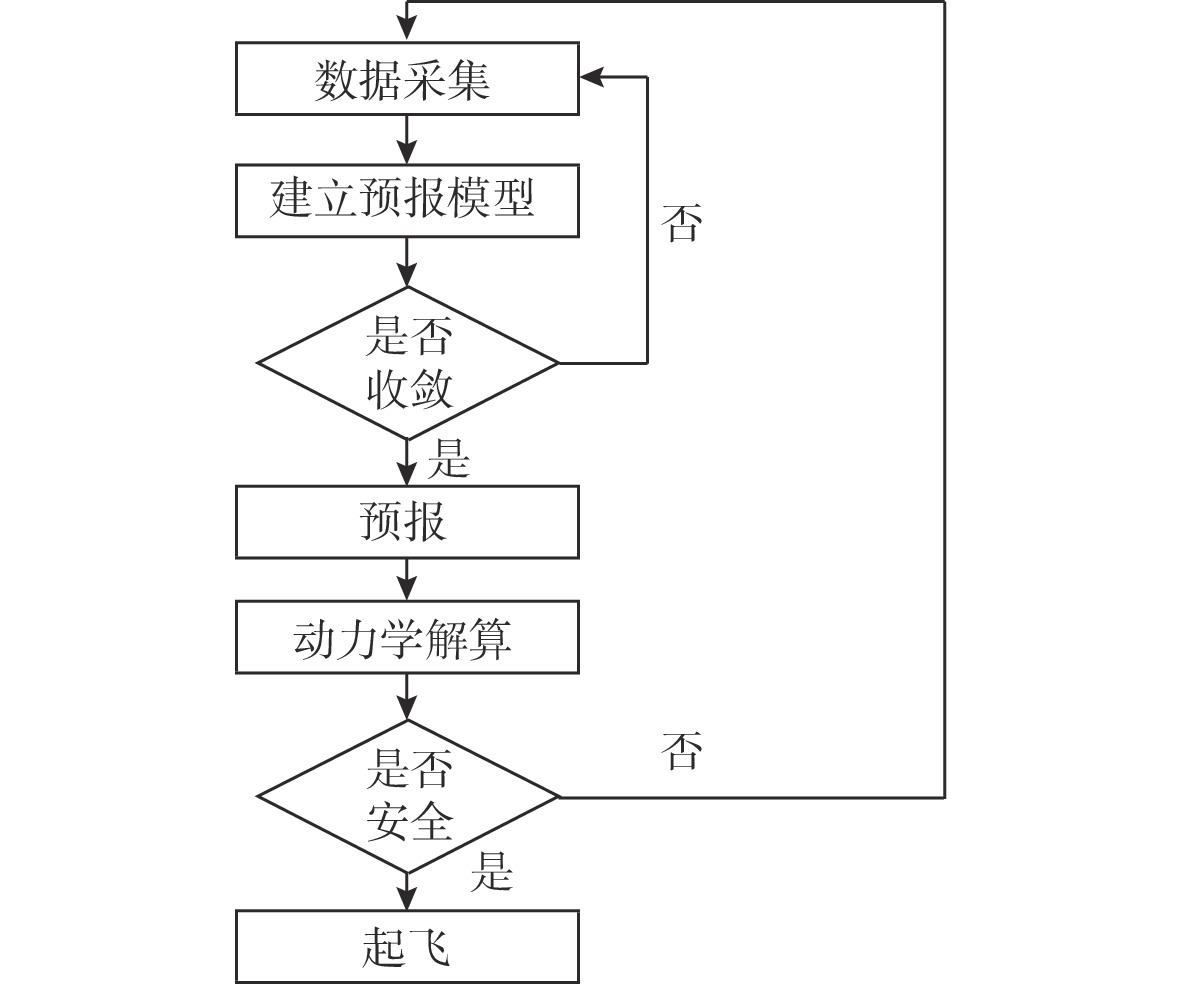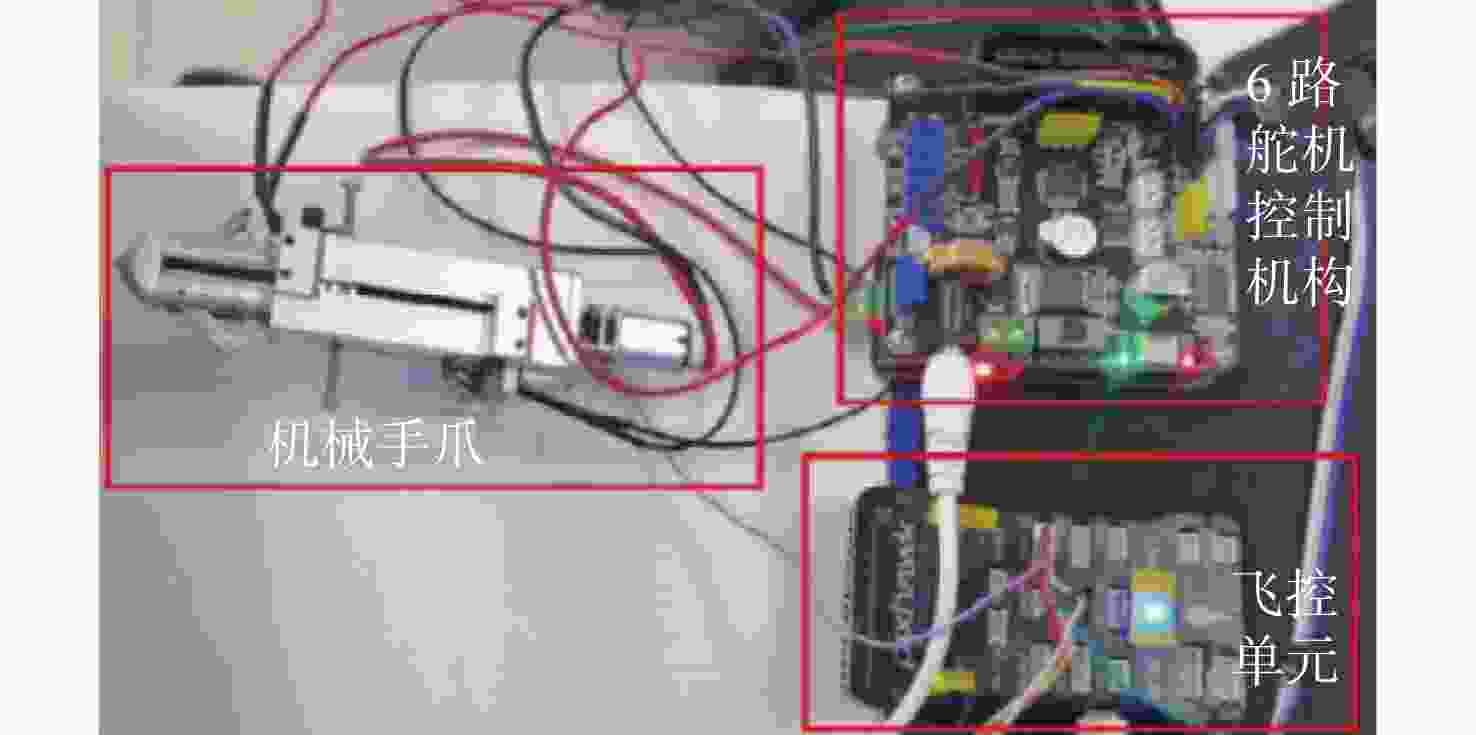Key Technologies and Verification of Cooperative Positioning Take-off and Landing for USVs and UAVs
-
摘要: 无人艇(USV)单平台执行水面任务易受平台限制, 构建无人艇-机跨平台系统能实现平台优势互补。文章通过研究无人艇-机起降及补能技术, 实现无人艇-机持久协同作业。首先, 针对无人机(UAV)在动态USV上起降问题, 开展无人艇-机协同定位起降技术研究, 研究了无人艇-机速度、位置状态信息动态更新模型, 实现了UAV在USV端高精度的起降; 其次, 针对UAV续航时间短的问题, 开展UAV在USV端补能研究, 研究了UAV端起降机构和USV端充电网机构, 实现了UAV着艇快速补能; 最后, 在海面验证该无人艇-机跨平台起降补能系统性能, 试验结果中, 无人艇-机系统能在3.0 m/s的高速运动状态下, 实现UAV在USV端的成功降落和补能, 满足海上无人艇-机跨平台系统执行任务场景的需求。Abstract: An unmanned surface vessel(USV) single-platform is easily restricted by the platform during surface mission execution, and the construction of a cross-platform system for USVs and unmanned aerial vehicles(UAVs) can realize the complementary advantages of the platform. In this paper, the take-off and landing and energy replenishment technologies of USVs and UAVs were studied to realize the enduring cooperative operation of USVs and UAVs. Firstly, for the problem of UAV taking off and landing on dynamic USVs, the research on cooperative positioning take-off and landing technologies for USVs and UAVs was carried out, and the dynamic update model of speed and position information of USVs and UAVs was studied, realizing high-precision take-off and landing of UAVs at the USV end. Secondly, to address the problem of the short endurance time of UAVs, the research on UAV replenishment at the USV end was carried out, and the take-off and landing mechanism at the UAV end and the charging mechanism at the USV end were investigated to realize the rapid replenishment of UAVs landing on the USV. Finally, the performance of the cross-platform take-off and landing and energy replenishment system for USVs and UAVs was verified at sea. In the test, UAVs could land at the USV end and get energy replenished at the high-speed movement of 3.0 m/s of the USV-UAV system, meeting the demand of cross-platform mission execution by USVs and UAVs at sea.
-
表 1 无人艇技术指标
Table 1. Technical specifications of the USV
名 称 参数性能 尺寸 长7.5 m, 宽2.8 m 满载吃水深度 ≤0.5 m(至载荷底部) 设计排水量 ≤2.5 t 搭载能力 ≥200 kg 工作速度 5~6 kn 最大平均航速 ≥12 kn 工作续航时间 20 h(工作航速) 通信性能 宽带≥15 km, 8 Mbit/s 布放回收 3级海况下, 人员无须登艇实现 表 2 无人机技术指标
Table 2. Technical specifications of the UAV
名 称 参数性能 载荷 ≥3 kg 巡航速度 ≥25 km/h 续航时间 ≥20 min 抗风能力 5级 防水等级 ≥IPX3 悬停精度 4级风速下, 水平悬停航迹控制精度优于0.5 m,
垂直悬停航迹控制精度优于0.5 m -
[1] Dong C, Li X, Chen X X, et al. Recent progress of marine survey unmanned surface vehicle in China[J]. Marine Technology Society Journal, 2019, 53(3): 23-29. doi: 10.4031/MTSJ.53.3.4 [2] 樊邦奎, 张瑞雨. 无人机系统与人工智能[J]. 武汉大学学报(信息科学版), 2017, 42(11): 1523-1529.Fan Bangkui, Zhang Ruiyu. Unmanned aircraft system and artificial intelligence[J]. Geomatics and Information Science of Wuhan University, 2017, 42(11): 1523-1529. [3] 李道亮, 包建华. 水产养殖水下作业机器人关键技术研究进展[J]. 农业工程学报, 2018, 34(16): 1-9.Li Daoliang, Bao Jianhua. Research progress on key technologies of underwater operation robot for aquaculture[J]. Transactions of the Chinese Society of Agricultural Engineering, 2018, 34(16): 1-9. [4] 徐小斌, 段海滨, 曾志刚, 等. 无人机/无人艇协同控制研究进展[J]. 航空兵器, 2020, 27(6): 1-6.Xu Xiaobin, Duan Haibin, Zeng Zhigang, et al. Progresses in UAV/USV cooperative control[J]. Aero Weaponry, 2020, 27(6): 1-6. [5] 戴碧碧. 无人机协同无人船在淮河崩岸监测中的应用[J]. 吉林水利, 2024(2): 37-41. [6] 朱鹏瑞, 韩阳, 刘红彪, 等. 无人机与无人船在船闸立体巡检中的协同应用[J]. 水道港口, 2023, 44(3): 432-438. [7] Dufek J, Murphy R. Visual pose estimation of USV from UAV to assist drowning victims recovery[C]//2016 IEEE International Symposium on Safety, Security, and Rescue Robotics(SSRR). Lausanne, Switzerland: IEEE, 2016. [8] Xiao X, Dufek J, Woodbury T, et al. UAV assisted USV visual navigation for marine mass casualty incident response[C]//2017 IEEE/RSJ International Conference on Intelligent Robots and Systems(IROS). Vancouver, BC, Canada: IEEE, 2017. [9] Wei W, Wang J, Fang Z, et al. 3U: Joint design of UAV-USV-UUV networks for cooperative target hunting[J]. IEEE Transactions on Vehicular Technology, 2022, 72(3): 4085-4090. [10] 赵良玉, 程喆坤, 高凤杰, 等. 无人机/艇协同自主降落的若干关键技术[J]. 中国造船, 2020, 61(S1): 156-163.Zhao Liangyu, Cheng Zhekun, Gao Fengjie, et al. Several key technologies of unmanned aerial vehicle-unmanned surface vehicle cooperative autonomous landing[J]. Shipbuilding of China, 2020, 61(S1): 156-163. [11] 范云生, 孙涛, 王国峰, 等. 基于海空双视觉协同的无人艇载无人机自主降落与验证[J]. 大连海事大学学报, 2022, 48(2): 1-10.Fan Yunsheng, Sun Tao, Wang Guofeng, et al. Autonomous landing and verification of unmanned boat-borne UAVs based on dual vision collaboration between sea and air[J]. Journal of Dalian Maritime University, 2022, 48(2): 1-10. [12] Xu Z C, Hu B B, Liu B, et al. Vision-based autonomous landing of unmanned aerial vehicle on a motional unmanned surface vessel[C]//2020 39th Chinese Control Conference. Shenyang, China: IEEE, 2020. [13] Li W, Ge Y, Guan Z, et al. Synchronized motion-based UAV-USV cooperative autonomous landing[J]. Journal of Marine Science and Engineering, 2022, 10(9): 1214. doi: 10.3390/jmse10091214 [14] Abujoub S, McPhee J, Irani R A. Methodologies for landing autonomous aerial vehicles on maritime vessels[J]. Aerospace Science and Technology, 2020, 106: 106169. doi: 10.1016/j.ast.2020.106169 [15] 王伟平, 何西, 董超, 等. 海洋探测无人艇: 平台设计及应用[J]. 电信科学, 2021, 37(7): 40-47. -





 下载:
下载:














